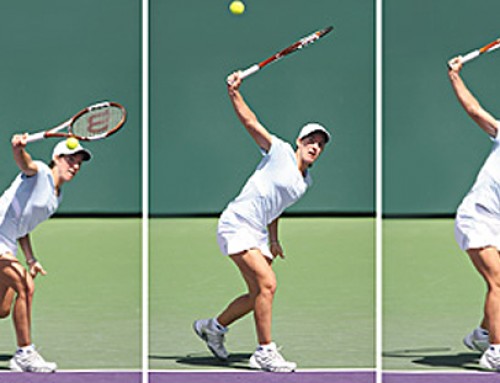Today we’ll continue building your own personal cheat sheet that will guide you to greater success every time you play singles…
Part 1 focused on the most critical starting point: position and consistency.
I posted it for you right here so you can check it out if you missed it (you’ll learn why playing great singles is like racing cars).
The bottom line was a rock solid “Plan A” that you should begin every singles match trying to execute to the best of your ability:
Hit cross court unless you have a GOOD reason to hit down the line.
Deceptively simple.
Do NOT make the mistake of writing it off as too basic or primitive. Starting there will dramatically cut down on your unforced errors, lead your opponents to try more difficult shots, and give you the positional high ground all the same time.
Here’s the question your’re probably wondering: “What is a ‘GOOD’ reason to hit down the line??”
Knowing the right time to pull the trigger is the difference between defeating your opponent and beating yourself…
This is where things start to get personal so you’ll need to do some critical thinking about your game (and the game of your opponent).
Here’s a short list of possible reasons why changing direction and going down the line could be the right choice:
Your opponent got pulled way out wide the shot before…
Your opponent isn’t positioning themselves correctly….
Your opponent has a huge weakness and its down the line….
Your opponent has a huge strength and its cross court….
Your favorite/most confidence/most effective shot is down the line…
You’re receiving an “inside ball” (explained in this video series)…
You’re going to approach the net…
That’s plenty to start with, I don’t want to overwhelm you with too many things to think about…
Suffice it to say there are a lot of different nuances to be aware of during your matches that can (and SHOULD!) inform which plays you run and which you don’t.
Unfortunately most singles players are just hitting random shots without any rhyme or reason. OR they’re using a fundamentally flawed approach like “hit it where they’re not” which leads to tons of errors and lost matches.
The key to success is beginning with this fundamentally sound “Plan A” framework:
Hit cross court unless you have a GOOD reason to hit down the line.
And then intelligently and purposefully layering nuances on top of it based on your strengths and weaknesses and your opponent’s strengths and weaknesses.
Will Hamilton did a really excellent job of illustrating this in his newest video that focuses on a concept called the “sword and shield”.
Here’s a link right to it if you haven’t seen it yet:
Sword And Shield Singles – Click Here!
I hope you go right to work filling out your cheat sheet now that you have Part 2!
At the top of your sheet should be the simple “Plan A”…
Under that I’d recommend pasting in the list of reasons to go down the line so you have a reminder of when it’s acceptable.
I’d also strongly recommend writing down your own personal strengths and weaknesses to remind yourself which shots are reasonable to attempt a change in direction with and which will lead to more errors.
Stay tuned because we’ll be finishing up with Part 3 soon.
Thanks for reading!
I’m excited for you to implement what you learn.
Yours Truly,
-Ian







